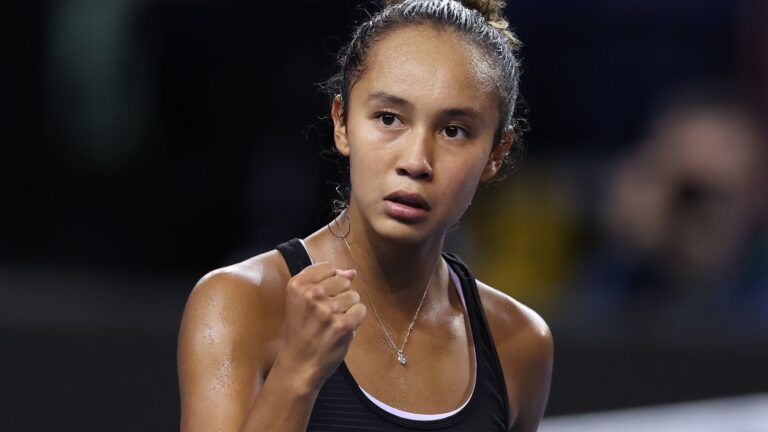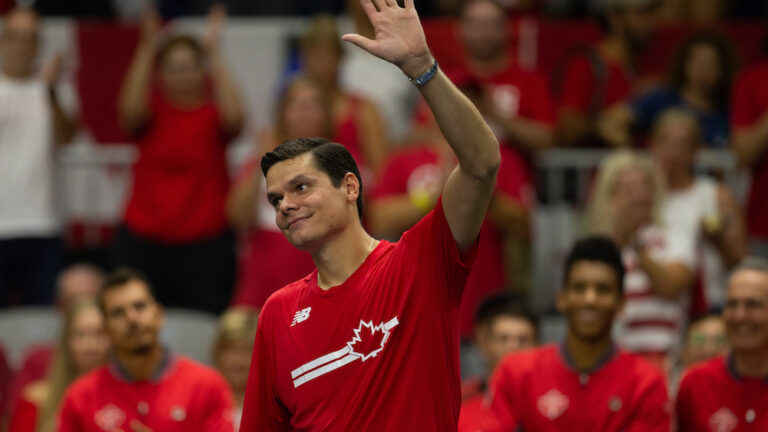
Photo: TVBEurope
You read this blog because you love tennis. And you most likely watch matches pretty regularly.
I’m referring to TV broadcasts, of course, but also to streams, which many of you follow on your laptops and even your smartphones.
The more you watch, the more you come to know what you appreciate and, more importantly, what you don’t.
So, I want to know what you like—and dislike—when you watch tennis. Write to me to back some of my points or add others to the list.
Here, I’ll be sharing my ideal broadcast model and explain why I like, or dislike, certain elements of the TV productions by the two companies under contract with the WTA and ATP and by the major networks during the Slams and big tournaments.
First and foremost, while fans are vital to the stadium atmosphere, tournament organizers must make satisfying TV audiences their priority when finalizing the layout of the courts.
Why? Because there are tens of millions of viewers and much fewer ticket holders.

SCORE BUG
Let’s start with the information that’s displayed on your screen. The three main elements you need to keep track of are serve speed, serve clock and match time.
They may not be essential on every point but the numbers are important—especially serve speed, which elucidates the trends that characterize a player’s performance or simply substantiate the impact of the service games on the outcome of a match.
Meant to speed things up, the serve clock has become key since it was first introduced, even despite the lamentably lax attitude of many officials when it comes to the timer’s rigorous application depending on who’s competing.
I found the perfect example (top corners of the screen) for all three while following Félix Auger-Aliassime’s first match at the Libema Open in ‘s-Hertogenbosch on June 9.


The two screenshots show what I believe should be the norm in every stadium, from the smallest events to the Slams: a large electronic display viewers can easily keep an eye on.
That said, for reasons I fail to understand, the score is sometimes displayed in the upper left corner, like at Wimbledon.
Insetting the score deprives viewers of information that, while not critical, is still important.
REPLAYS
Replays are the most important element of a tennis broadcast. Still, their airing and the frequency at which they air vary because producers depend on the different broadcasting deals with the Slams, WTA (WTATV) and ATP (TennisTV).
Replays are like really delicious desserts: less is more. The match between Denis Shapovalov and Oscar Otte in Stuttgart on June 9 is a good example of the inadequate use of replays. The director went out of their way to use (and overuse) missed shots. And not just any: low balls in the net and attempts that fell way outside the lines. I’d never seen so many useless replays before.
Incidentally, you’ll rarely see a replay of an error since tennis authorities may recommend broadcasters not show trivial slip-ups too often in the interest of protecting the tennis product. But an error is relevant when it spoils a great rally or a player’s opportunity to change the course of a match. If the sequence leads to a rare, bizarre or even comical event, it’s also relevant.
CLOSE-UPS
Close-ups and shots of the players are an integral part of the show. Given the limited amount of actual action in a two-hour broadcast, it’s unthinkable to relay only wide shots of the court.

Of course, images that capture tension and emotion at the very moment they occur are an essential part of a successful broadcast.

CAMERA PLACEMENT
While the principle is simple, the fact remains that television broadcasts from large stadiums don’t provide a true idea of the speed at which shots zoom by or the effects generated by the players. The larger the venue, like those at the majors and leading tournaments (like at Wimbledon below or, worse, in Beijing), the greater the depth of field and the more reality is distorted.


Producers often place a camera lower and closer to the action for a different angle that gives a better idea of what’s happening on the court.
It’s a great concept but only available on rare occasions, which, in my opinion, is a mistake. Fans love feeling a sense of proximity, as if they were right there on court with the players.
That said, the camera provides a better impression in smaller stadiums, like at the Rothesay Open early on in the grass season.

At the other end of the spectrum, some secondary courts are so small that a wide-angle lens is the only option. In those cases, the opposite effect occurs, and the player at the far end looks teeny tiny, making it difficult to get a real sense of the quality of the rallies.

HANDSHAKE
The match may be over, but not showing the meeting at the net that seals the deal is a mortal sin.
And yet, it happens all too often.
The handshake is more important than you may think. Though rather conventional most of the time, it must be shown—a concept some producers don’t understand, since they’ll cut out to the reaction of a fan or someone on the winner’s team instead.
A handshake can be a memorable moment, like when Félix Auger-Aliassime defeated his childhood idol Jo-Wilfried Tsonga on February 17 in Marseille.

Some endings are the topic of a lot of talk. Take, for example, the match at Roland-Garros between the promising Holger Rune of Denmark and World No.6 Casper Ruud of Norway. The producer could absolutely not miss the dubious behaviour exhibited by Rune who, despite being very upset by the outcome, should have been more sincere and more respectful when he congratulated his rival. Indeed, Rune was the complete opposite, and the reaction by Ruud, who shook his head in disappointment at his opponent’s reaction, was worth its weight in gold.
Those are moments that should NEVER be missed.

STATS
Some broadcasts load the bottom of the screen with statistics. And that’s the right thing to do. For fans who appreciate this type of information, the figures are an added value.
For fans who aren’t interested in the numbers game, the data is harmless and doesn’t disturb the content, regardless of whether the commentators refer to them or not.
What’s more, matches aired without commentary are more and more common on specialty channels and streams alike. In these cases, an abundance of statistics enhances the broadcast.
Among the most important statistics that should appear practically systematically are the number of aces and double faults. For better or for worse, we like to know how our favourites and the tours’ most dominant players are serving.


Fans also like to be reminded of the number of breaks, including break opportunities, as well as the winners vs. unforced errors. And don’t forget winner speeds and RPMs to gauge forehand and backhand topspin.
POST-MATCH INTERVIEWS
When it comes to the inevitable post-match interview with the winner or winners, not all players are good at the mic. It isn’t always easy to give an in-depth analysis of one’s own 60-, 90- or 120-minute match. That means the interviewer needs to be on their game, too.
There’s no excuse for asking empty or irrelevant questions. The perfect example of what not to do is the interview with Bianca Andreescu after her win over Martina Trevisan at the Bad Homburg Open on June 21.

Perhaps starting the interview with a comment on how many winners she’d hit was a way to get Bianca to expand on the topic, but it’s a strategy that often leads to bland answers. The interviewer went on to ask her abysmally trite questions about how important her team was to her and how much she was enjoying the tournament. What else could she say but how wonderful her people are and how much fun she was having at the event?
There are so many ways to come up with good questions on a match’s critical moments and specific shots. All an interviewer has to do is watch the match or even ask the commentators for a few suggestions.
Clearly, conducting interviews isn’t for everyone.
And, by the way, please stop asking players what they expect from their opponent in the next round. They hate that question and will never say anything that could be held against them or motivate the other camp. U-s-e-l-e-s-s.
SHARE YOUR THOUGHTS
As I mentioned earlier, I want to hear what you have to say. Let me know what you like and don’t like about tennis broadcasts.
Email: privard@tenniscanada.com
Twitter: @paul6rivard
Follow all our Canadians in action here.




